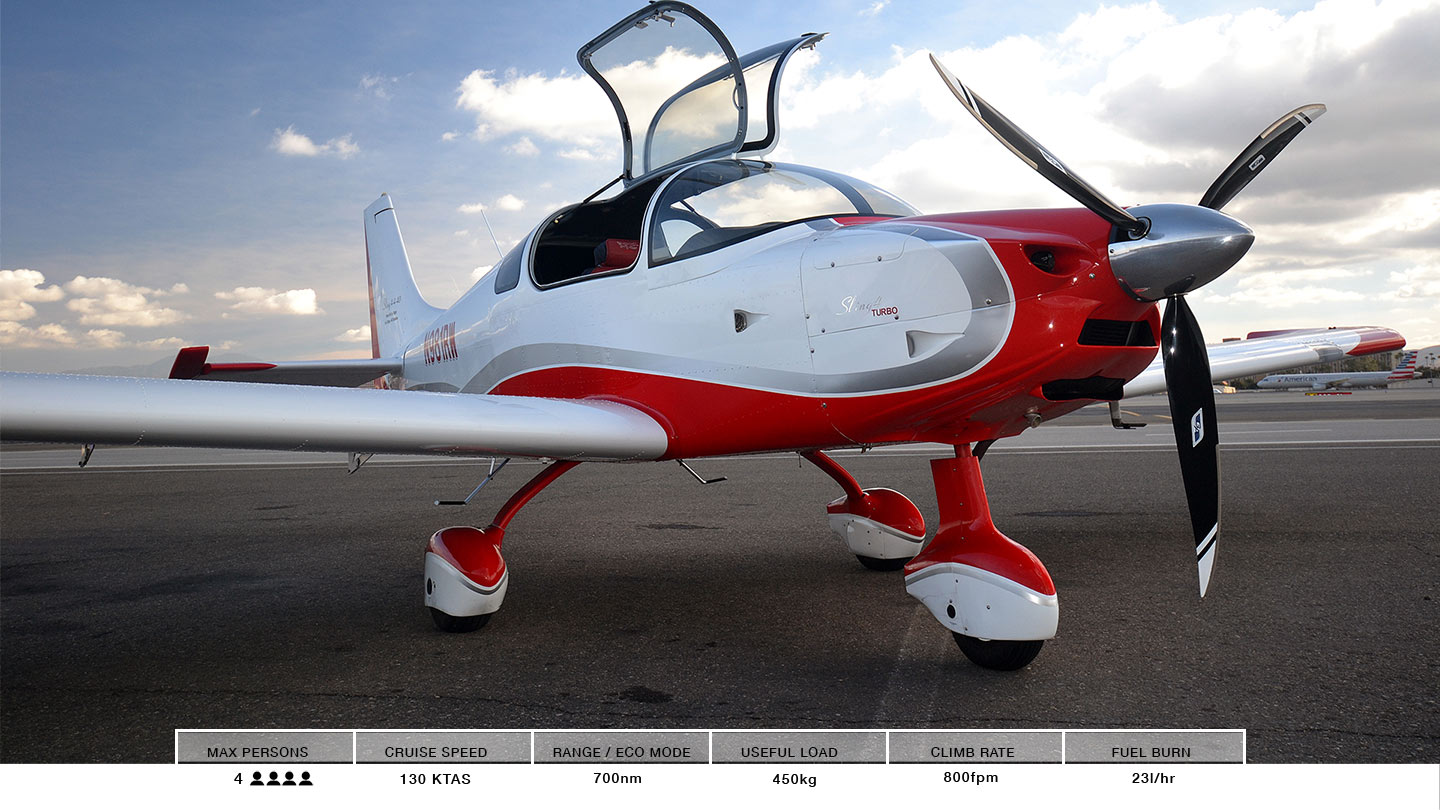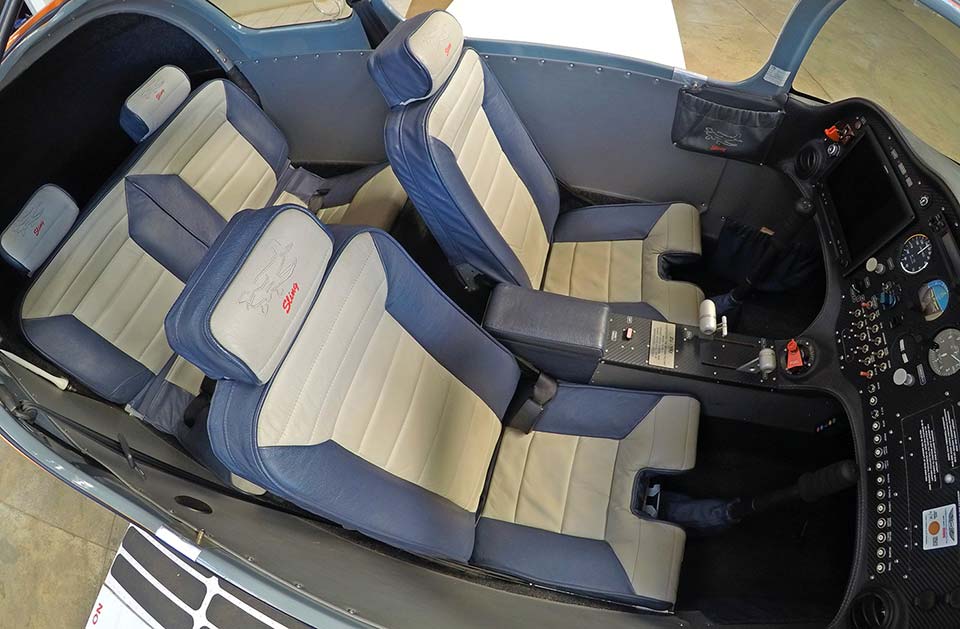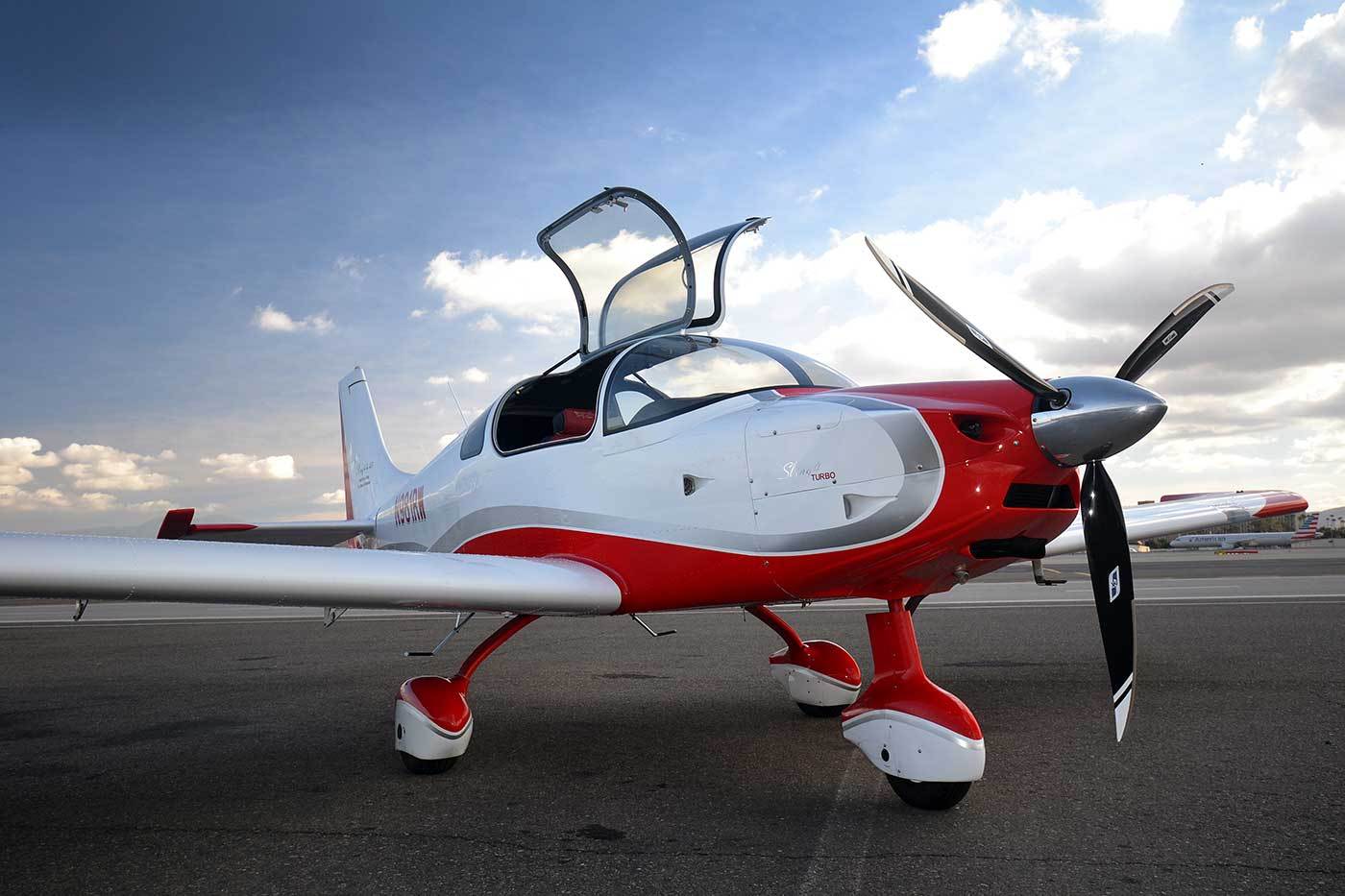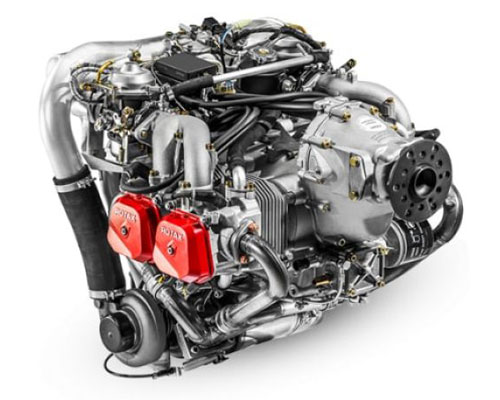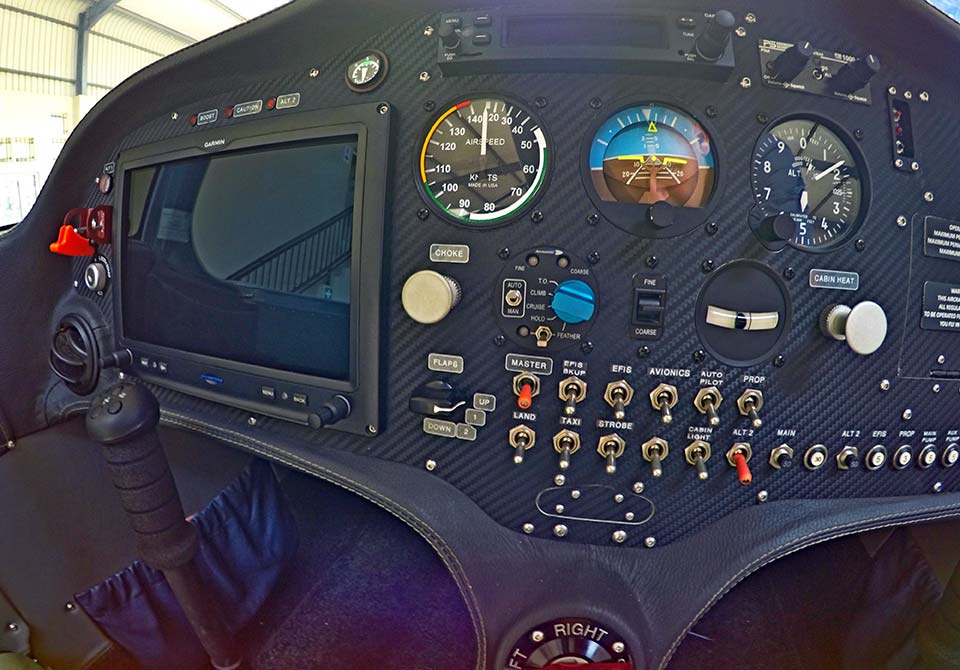The idea of a Sling 4-seater emerged from Sling Aircraft founders’ Mike Blyth and James Pitman’s 2009 Around-The-World (ATW) Sling flight. Although designed as a 600 kg Light Sport Aircraft, it was soon clear that even with a normally aspirated 100 hp motor, it performed well up to 970 kg. Thus the Sling 2, after passing the required standards, was certified as a 700 kg MAUW.
Work also began on the development of a 4-seat version. The chief differences between the Sling 2 and the Sling 4 are wing size, engine and the centre fuselage arrangements. Where the standard Sling customarily uses a 100 hp Rotax 912 ULS or iS engine, the Sling 4 is fitted with the 115 hp turbocharged Rotax 914 UL engine, while the Sling TSi is powered by a 142 hp Rotax 915 iS Turbo Injected Sports.
The turbocharged engine gives full power at up to 15,000 feet, at which altitude the 100 hp would only be delivering approximately 55 hp. So, on a hot day the difference in power between the 912 ULS and 914 UL engine is in the vicinity of 36%, not just 15%.
PRACTICAL AND DESIRABLE
The Sling 4 was built to be the most practical and desirable lightweight, four-place experimental aircraft on the market, a niche not previously filled. It’s slightly longer than the Sling LSA, but with a more powerful engine (Rotax 914 UL) and gullwing doors instead of a sliding canopy. It flies much like the Sling LSA, perfectly-coordinated with highly responsive – but not overly-sensitive – controls.
It’s the perfect getaway aircraft for four with ample luggage space.



